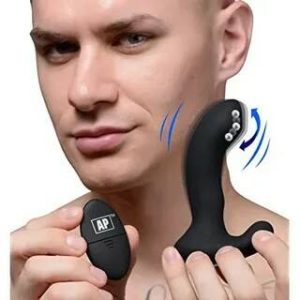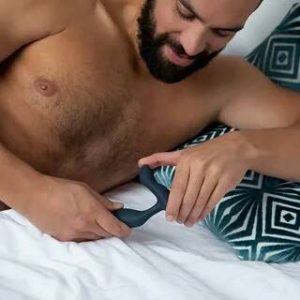What Is a Prostate Massage
A prostate massage is a therapeutic technique that involves massaging the prostate gland to release accumulated fluid and improve blood flow. It is believed to have numerous health benefits, such as improving urinary function, reducing the risk of prostate cancer, and improving sexual function.
Before attempting a prostate massage, it is important to consult with a healthcare professional to determine if it is safe and appropriate for you. People with certain medical conditions, such as acute prostatitis, prostate cancer, or hemorrhoids, should avoid prostate massage.
To prepare for a prostate massage, you will need to:
1. Empty your bladder and bowels: Before beginning the massage, it is important to ensure that your bladder and bowels are empty. This will make the massage more comfortable and reduce the risk of infection.
2. Cleanse the area: The area around the prostate and anus should be cleaned thoroughly with soap and water or an antiseptic wipe. You can also use a water-based lubricant to make the massage more comfortable and reduce the risk of injury.
3. Choose a comfortable position: You can perform a prostate massage while lying on your back with your knees bent and your feet flat on the bed or floor. You can also do it while standing, kneeling, or lying on your side with your knees drawn up to your chest.
4. Use a prostate massager: A prostate massager is a specialized device designed to stimulate the prostate gland. It is important to choose a high-quality, well-designed massager that is easy to use and comfortable to insert.
How do I prepare for prostate massage?
If you are considering prostate massage, it’s important to prepare properly to ensure that the experience is safe and comfortable. Here are some steps you can take to prepare:
- Talk to your healthcare provider: Before undergoing prostate massage, it’s important to speak with your healthcare provider. They can assess whether it’s appropriate for you and can provide guidance on the best approach.
- Empty your bladder and bowels: Before the massage, it’s important to empty your bladder and bowels to avoid any discomfort or embarrassment.
- Clean the anal area: It’s important to thoroughly clean the anal area before the massage to reduce the risk of infection. You can use a gentle, fragrance-free soap and warm water or a specially designed enema kit.
- Choose a comfortable position: You should choose a comfortable position for the massage, such as lying on your side with your knees pulled up towards your chest.
- Relax: It’s important to relax as much as possible during the massage to reduce any discomfort. Deep breathing and visualization techniques can be helpful.
- Use plenty of lubricant: It’s important to use plenty of lubricant during the massage to reduce friction and discomfort.
- Communicate with your practitioner: It’s important to communicate with your practitioner during the massage. Let them know if you’re experiencing any discomfort or if you need a break.
By following these steps, you can help ensure a safe and comfortable prostate massage experience.
How to perform prostate massage
Here’s how to perform a prostate massage:
1. Prepare: Start by ensuring that your hands are clean and your nails are trimmed. It’s also a good idea to empty your bladder before beginning.
2. Lubricate: Apply a generous amount of water-based lubricant to your fingers and to the opening of your anus. This will help ensure a comfortable and pleasurable experience.
3. Insert: Slowly and gently insert your finger(s) into your anus, with your palm facing up. The prostate gland is located about 2-3 inches inside the rectum, so you may need to experiment with different depths and angles to find it. You can also use a prostate massager or toy designed for prostate stimulation if preferred.
4. Massage: Once you’ve located the prostate, gently massage it with a “come hither” motion using your finger(s) or toy. You can also try applying pressure to different areas of the prostate or experimenting with different rhythms and speeds to see what feels best for you.
5. Finish: After you’ve finished your massage, be sure to clean your hands and any toys thoroughly with soap and warm water.
It’s important to note that prostate massage should only be performed with clean hands or a clean toy, and that communication and consent are essential when exploring this type of stimulation with a partner. If you experience any pain or discomfort during a prostate massage, stop immediately and seek medical attention if necessary.

What about prostate massagers?
Prostate massagers are specialized devices designed to stimulate the prostate gland for therapeutic or pleasure purposes. They can be used by individuals https://incognito.black or by healthcare professionals for medical purposes. Here are some things to keep in mind if you’re considering using a prostate massager:
- Choose a reputable brand: When selecting a prostate massager, it’s important to choose a reputable brand that uses high-quality materials and is designed for safe and effective use.
- Use plenty of lubricant: It’s important to use plenty of lubricant with a prostate massager to reduce discomfort and prevent damage to the delicate tissues in the anal area.
- Follow the instructions: It’s important to carefully read and follow the manufacturer’s instructions when using a prostate massager. This will help ensure safe and effective use.
- Start slow: If you’re new to prostate massage or using a prostate massager, start slow and gradually increase the intensity and duration of the massage over time.
- Keep it clean: It’s important to clean your prostate massager thoroughly before and after each use to reduce the risk of infection.
- Avoid overuse: It’s important to avoid overusing a prostate massager, as this can lead to discomfort, irritation, and other problems.
It’s important to note that while prostate massagers can be used for therapeutic or pleasure purposes, they should be used with caution and under the guidance of a healthcare professional. Prostate massage may not be appropriate for everyone, especially those with certain medical conditions or a history of prostate problems.
Advantages
Prostate massage is a type of therapeutic massage that involves stimulating the prostate gland, which is located near the rectum. Here are some of the potential advantages of prostate massage:
- Relieving pain: Prostate massage may help alleviate pain and discomfort associated with prostatitis, an inflammation of the prostate gland.
- Improving sexual function: Prostate massage may help improve erectile dysfunction (ED) by increasing blood flow to the penis and improving nerve function.
- Reducing symptoms of BPH: Prostate massage may help reduce the symptoms of benign prostatic hyperplasia (BPH), a non-cancerous enlargement of the prostate gland that can cause urinary problems.
- Improving semen quality: Prostate massage may help improve semen quality by increasing semen volume and reducing the number of dead or abnormal sperm.
- Providing prostate cancer screening: Prostate massage may also be used as a diagnostic tool for prostate cancer by collecting fluid for testing.
It’s important to note that prostate massage should only be performed by a trained healthcare professional or experienced practitioner. It’s not recommended for everyone, especially those with certain medical conditions or a history of prostate problems.
Disadvantages
While prostate massage may have potential benefits for some individuals, it can also have some disadvantages and risks. Here are some of the potential disadvantages of prostate massage:
- Risk of infection: Prostate massage can increase the risk of bacterial infection, especially if it’s not done properly. If bacteria from the rectum enter the prostate gland, it can cause an infection that can be difficult to treat.
- Pain and discomfort: Prostate massage can be painful and uncomfortable, especially if the prostate gland is inflamed or enlarged.
- Bleeding: Prostate massage can cause bleeding, especially if there are any open wounds or sores in the rectal area.
- Spread of cancer: Prostate massage can potentially spread cancer cells, especially if prostate cancer is already present.
- False-negative results: Prostate massage can interfere with the accuracy of some tests for prostate cancer, such as the prostate-specific antigen (PSA) test, leading to false-negative results.
It’s important to discuss the potential risks and benefits of prostate massage with a healthcare professional before considering it as a treatment option.
